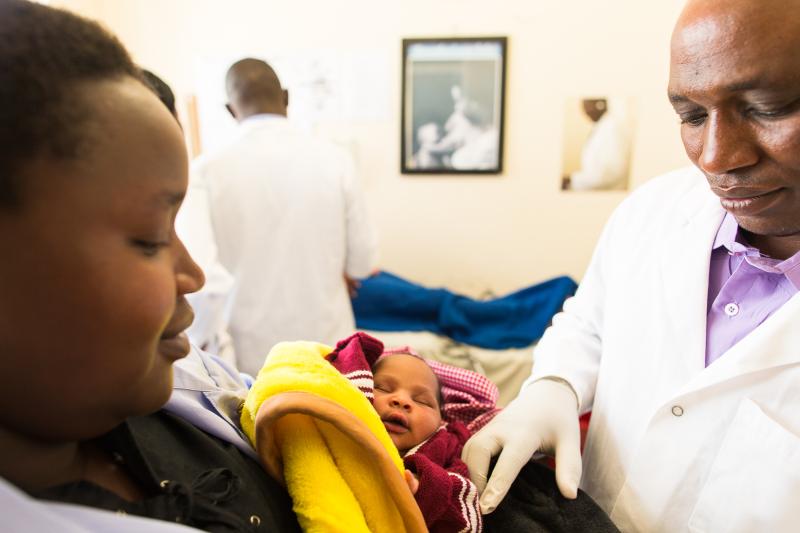Where We Work
See our interactive map


Photo by Trevor Snapp for IntraHealth International
In September, as part of our journey to becoming a fit-for-purpose NGO of the future, IntraHealth International announced our new strategic affiliation with DAI. Since then, many of our friends and colleagues have been asking us the same questions.
“Why are you getting together with a for-profit organization?”
“What are you hoping to achieve with this affiliation?”
“How will this help IntraHealth achieve its own strategic vision and goals for the future?”
And even, “Can we still work with you?”
It’s a new era that demands we respond in more sophisticated, cohesive, and cross-sectoral ways to the grave global challenges we face.
All good questions. (And the answer to the last one is yes.) We’ve asked ourselves many of the same things, especially over the past year and as the health and development landscape has become increasingly complex and dynamic (and, frankly, more interesting).
We can no longer keep our heads down as we work in our own disparate corners of development if we want to achieve the Sustainable Development Goals (SDGs). It’s a new era that demands we respond in more sophisticated, cohesive, and cross-sectoral ways to the grave global challenges we face. Almost exactly four years ago, FSG’s “Ahead of the Curve: Insights for the International NGO of the Future” report declared: “Today’s iNGO model is not sufficient to take on the challenges of the next 20 years.”
We took this to heart.
At IntraHealth, we have a long history of evolving with the times. We formed in 1979 as a program of the University of North Carolina (UNC) School of Medicine to lead USAID’s global population program, building the capacity of frontline health workers to offer modern contraception around the world. Twenty-four years later, with new health challenges to address and funding opportunities to pursue, we separated from UNC to become an independent nonprofit in 2003.
Over the last decade, IntraHealth’s primary funding model—securing grants and contracts mostly from US-based institutional donors—has become increasingly difficult to navigate on our own. Donors and clients demand better evidence, more accountability, greater value-for-money, and different relationships with governments, local civil society, and the private sector. Competition for resources has grown fierce as universities, social entrepreneurs, local and global organizations, and others have entered the space. Larger organizations have only grown larger thanks to economies of scale and reach. And like many other nonprofits, we’ve faced challenges in tapping and harnessing investment resources to help people in new and different ways—for example, by expanding into new lines of business or geographies.
Who were we going to call?
So in 2016, we set out to explore. We looked at a variety of scenarios for a new organizational design that would future-proof us and maintain the assets and capabilities that are unique to us.
We knew, for example, that we wanted to maintain our brand, our mission, and our identity as a technical leader and advocacy voice in strengthening health systems and the health workforce. We wanted to reinforce and grow our vast network of deep, trusting relationships with partners in countries where we work. And we wanted to secure our nonprofit status.
But we also recognized that it takes more than strong health systems to bring about the healthy planet and populations we envision through the SDGs. So we also wanted to be better able to generate credible, multisectoral responses and bring in the best thinking in governance, economic growth, education, agriculture, and other sectors.
In short, we wanted to be SDG-ready.
The SDGs were designed to have lasting impact in an increasingly complex world. It will take new models and audacious thinking to tackle them.
Who were we going to call? Most of us had heard of DAI, though many of us didn’t know the organization well. They’re a much larger development firm, recognized for finding new and bigger ways to serve humanity.
The SDGs were designed to have lasting impact in an increasingly complex world. It will take new models and audacious thinking to tackle them.
As we got to know our DAI colleagues better, we were thrilled to recognize their complementary vision, values, technical capabilities, geography, and talents. We saw how DAI anticipated future trends and responded effectively, including establishing a vibrant business with European donors and investing consistently in innovation. And we liked what we saw.
We are only in the first months of our new affiliation. Our staff members at all levels are still getting to know each other. We are working out the details of how we partner, how we continue to partner with others, and how we build something that is more than the sum of our parts.
At IntraHealth, we’re optimistic about the possibilities of this unique arrangement. We are learning how to become the NGO of the future to deepen our impact, and we look forward to sharing the lessons we learn—and encouraging others to be bold.
After all, the SDGs were designed to have lasting impact in an increasingly complex world. It will take new models and audacious thinking to tackle them. So think about it with us. Together, we can be ready.
This post was originally published on the blog of Humentum
Get the latest updates from the blog and eNews




